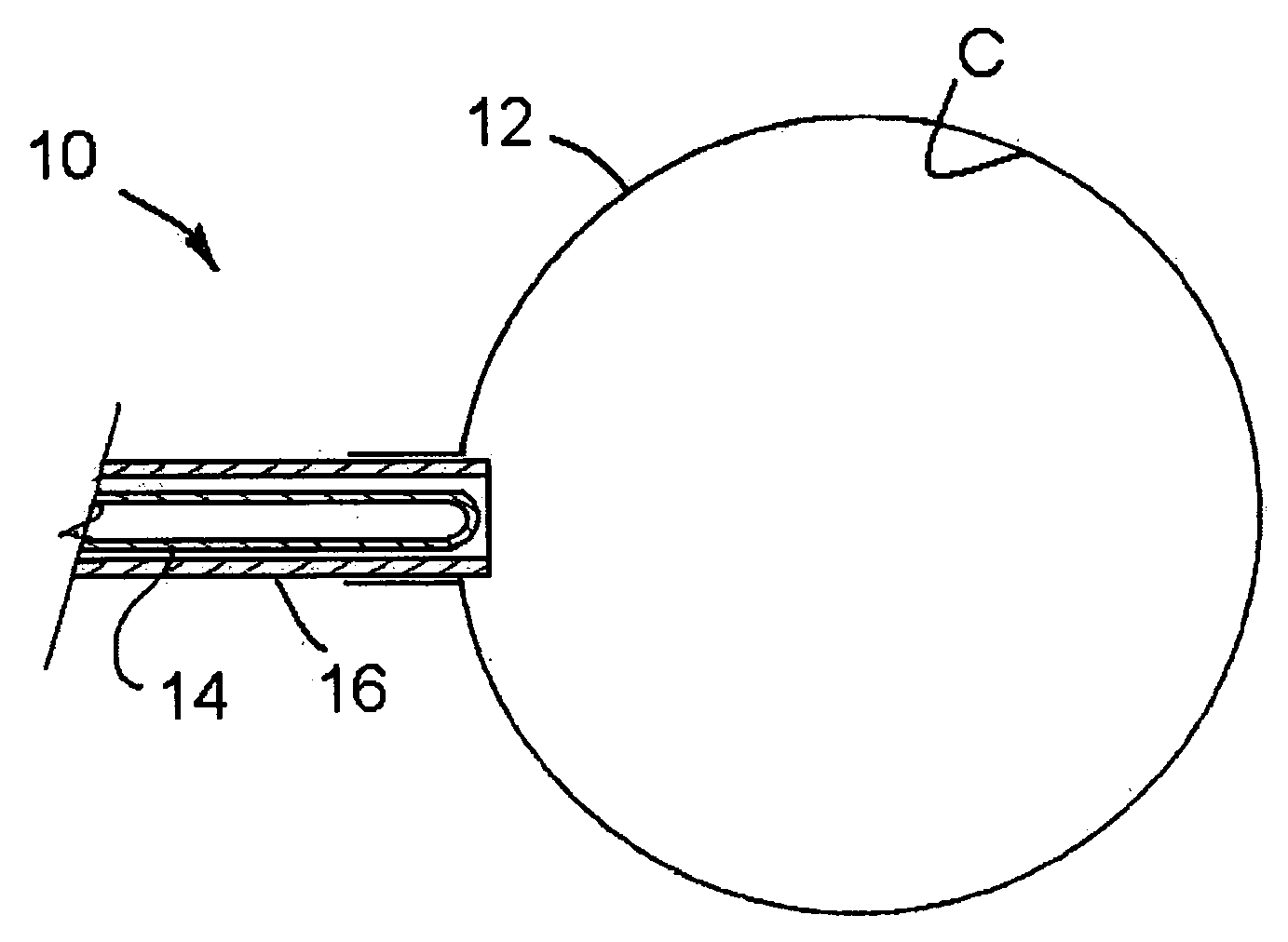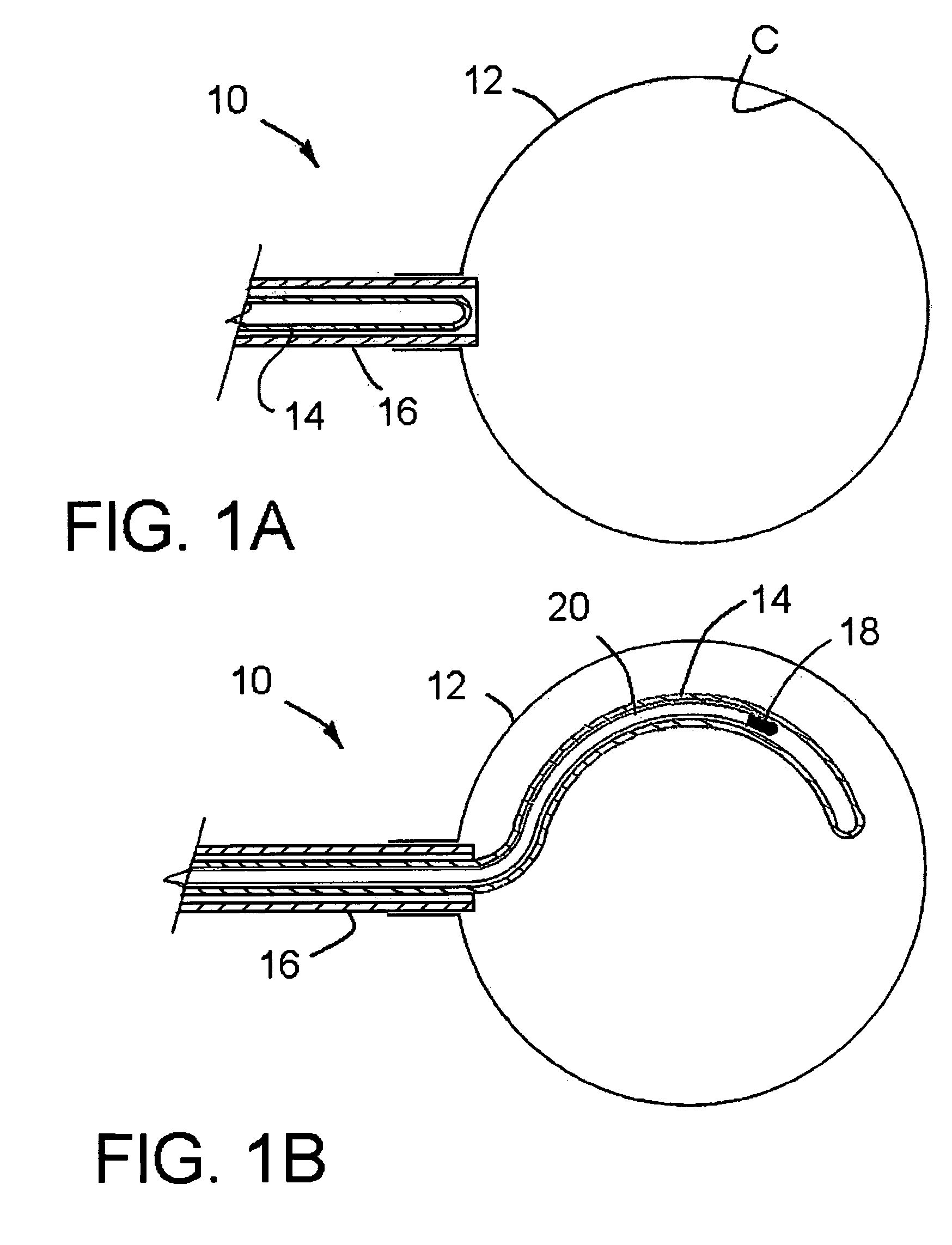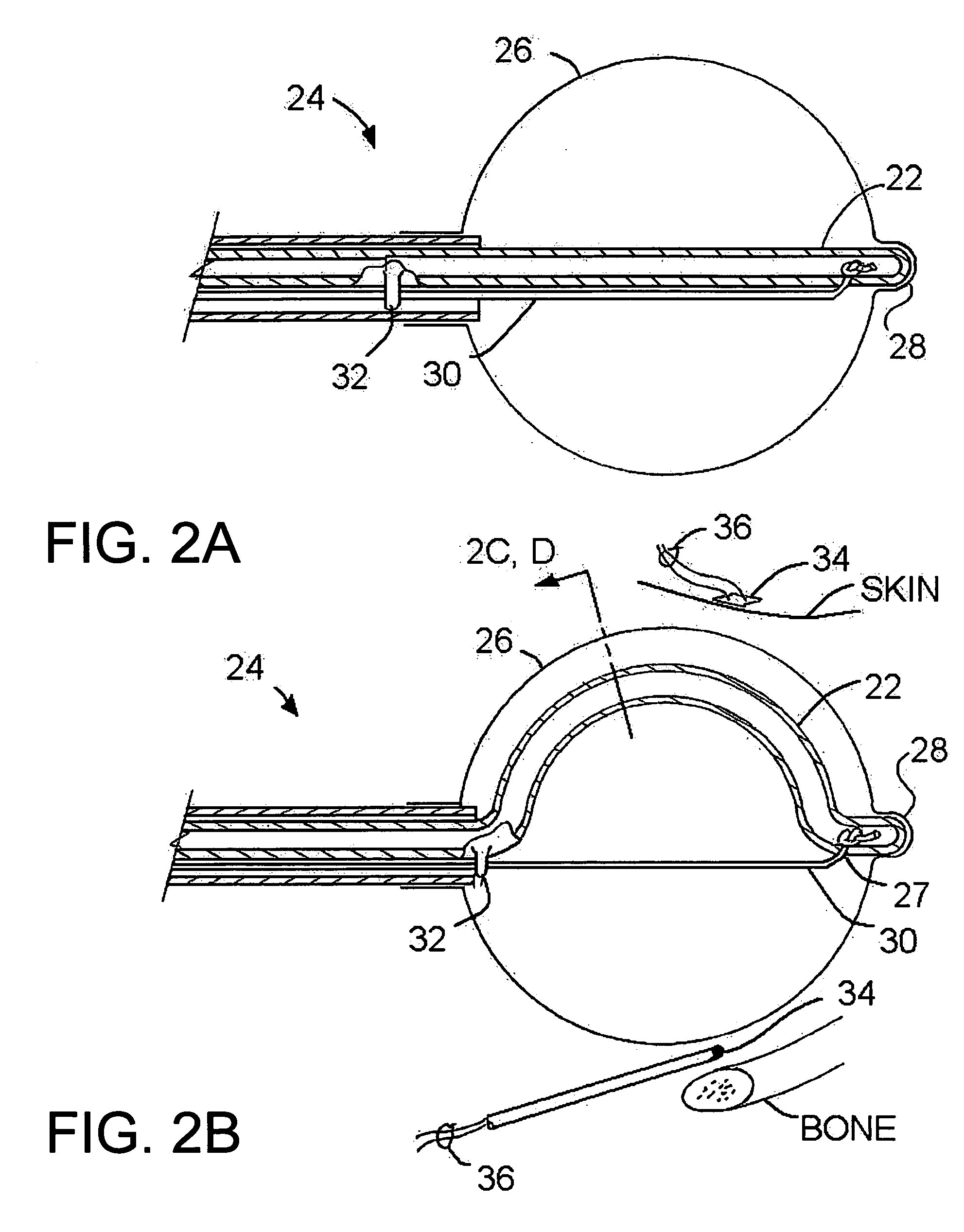Brachytherapy Apparatus and Method Using Rotating Radiation Source
a radiation source and brachytherapy technology, applied in radiation therapy, therapy, etc., can solve the problem that isotope sources cannot in principle be modulated, and achieve the effect of reducing the dwell time of the source, increasing the distance from the source, and reducing the penetration distance or dose intensity
- Summary
- Abstract
- Description
- Claims
- Application Information
AI Technical Summary
Benefits of technology
Problems solved by technology
Method used
Image
Examples
Embodiment Construction
[0029]FIG. 1A depicts the balloon portion of an applicator of the invention. The balloon 12 is shown inflated with fluid, preferably by a liquid, filling and shaping the resection cavity C. The tip of a self-deploying source guide 14 is shown positioned within a shaft 16 fixed to the balloon of the applicator, in preparation for advancement into the balloon 12. One material of which such a source guide might be fashioned is superelastic Nitinol. Such a Nitinol guide can be fabricated in a preferred final bowed shape, but when stress is applied, the guide can be forced into another form and restrained in its new shape. When the restraint is removed, the guide will again resume its original shape as fabricated.
[0030]In FIG. 1A, the applicator shaft 16 provides the restraint to hold the fabricated shape of the guide 14 in a substantially straight configuration, although the fabricated shape of the guide 14 is a bowed shape along the distal portion which will be inserted into the volume...
PUM
 Login to View More
Login to View More Abstract
Description
Claims
Application Information
 Login to View More
Login to View More - R&D
- Intellectual Property
- Life Sciences
- Materials
- Tech Scout
- Unparalleled Data Quality
- Higher Quality Content
- 60% Fewer Hallucinations
Browse by: Latest US Patents, China's latest patents, Technical Efficacy Thesaurus, Application Domain, Technology Topic, Popular Technical Reports.
© 2025 PatSnap. All rights reserved.Legal|Privacy policy|Modern Slavery Act Transparency Statement|Sitemap|About US| Contact US: help@patsnap.com



